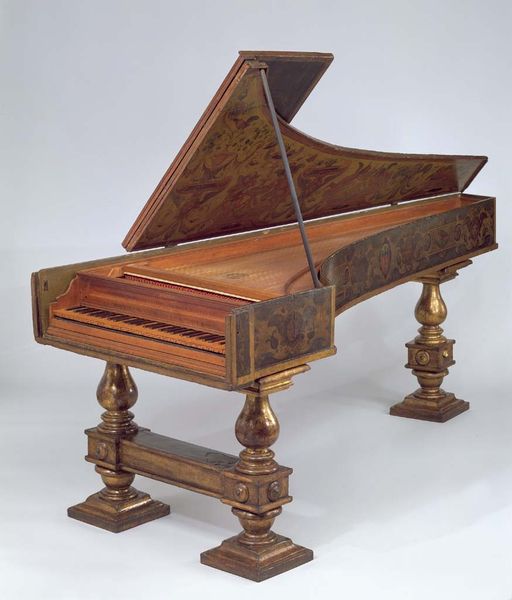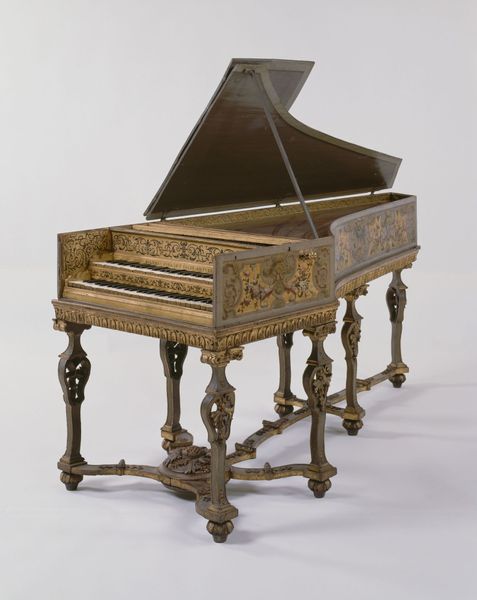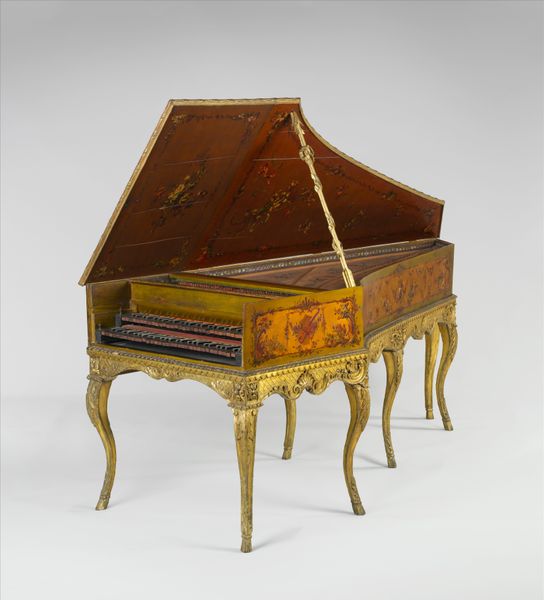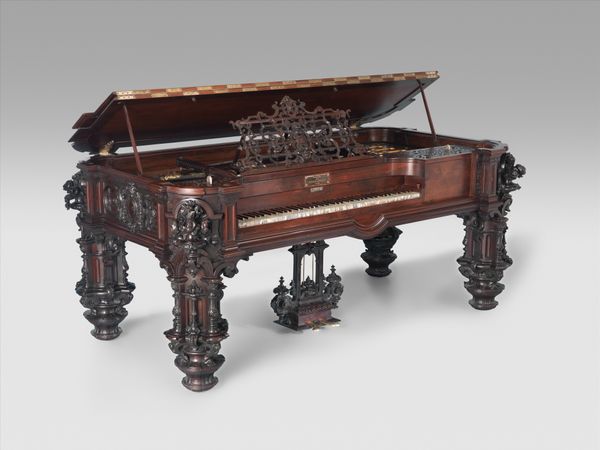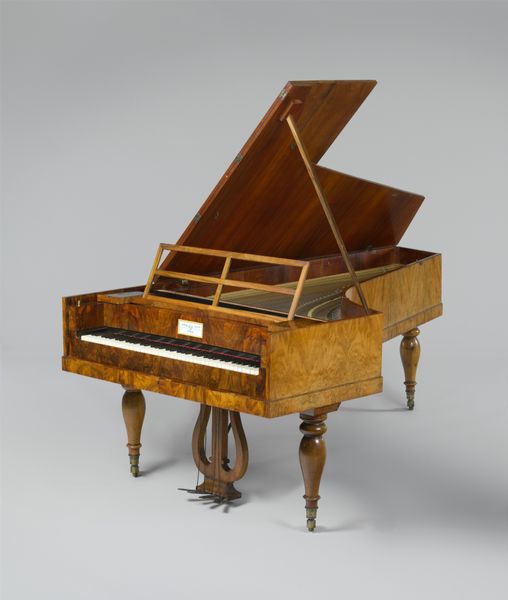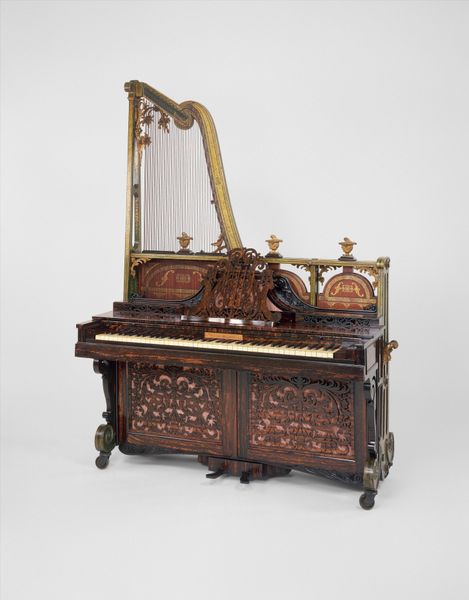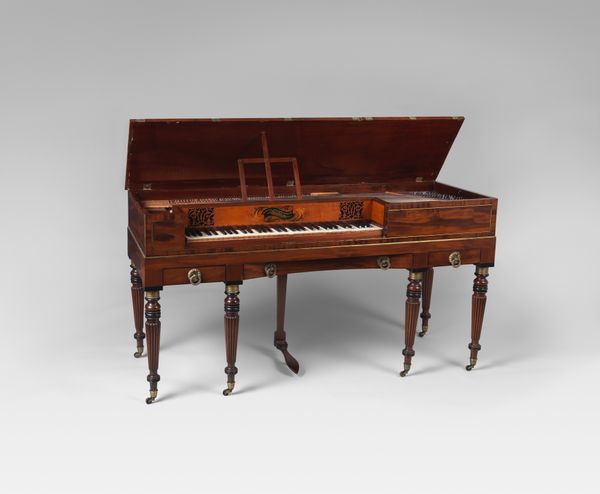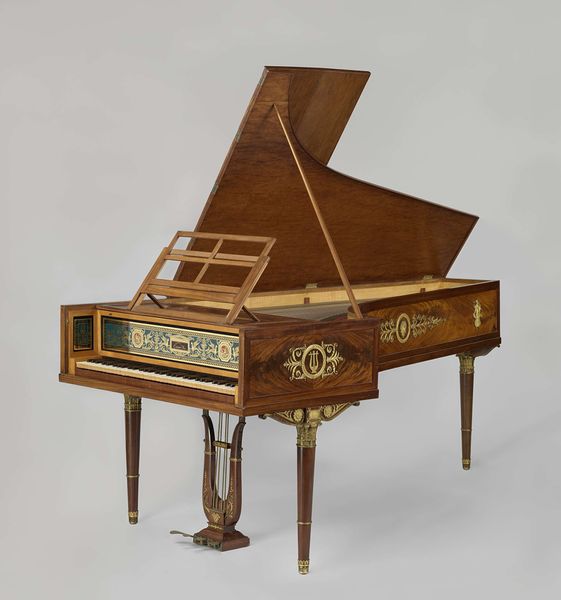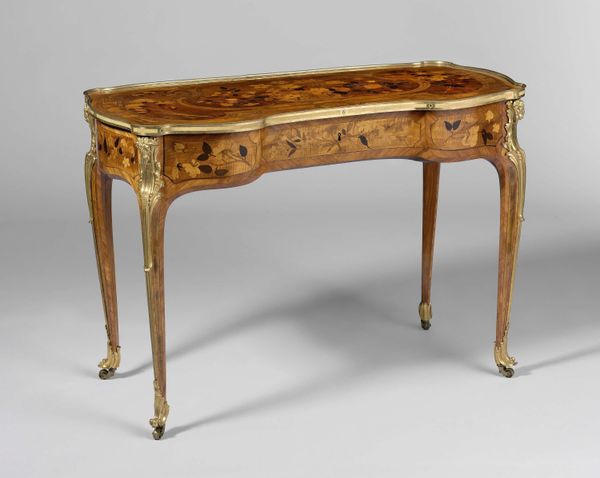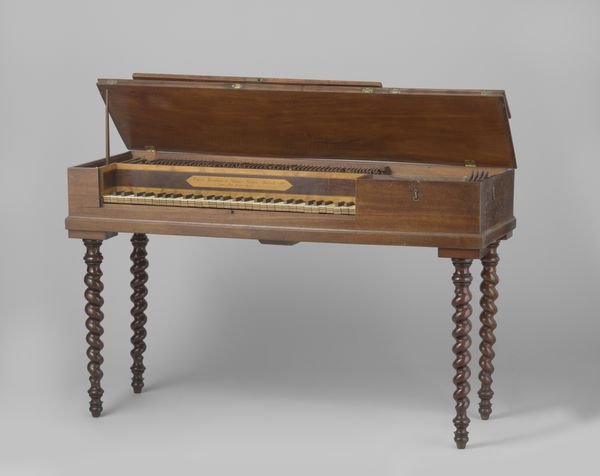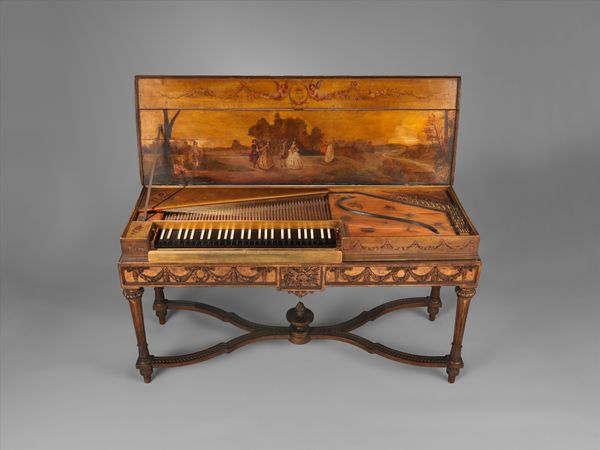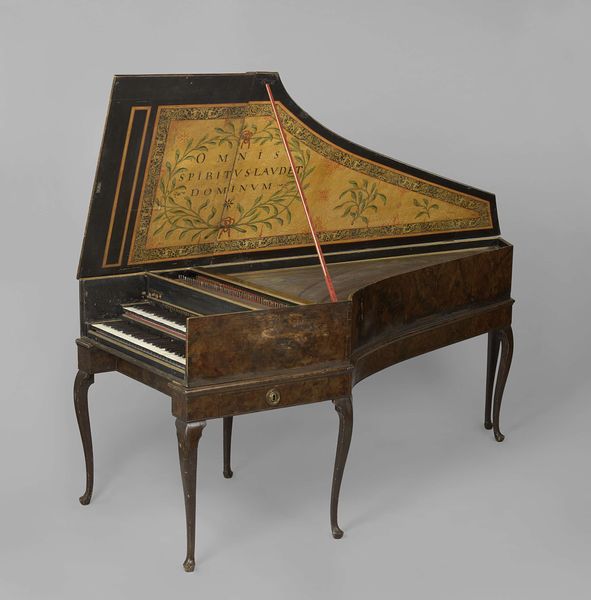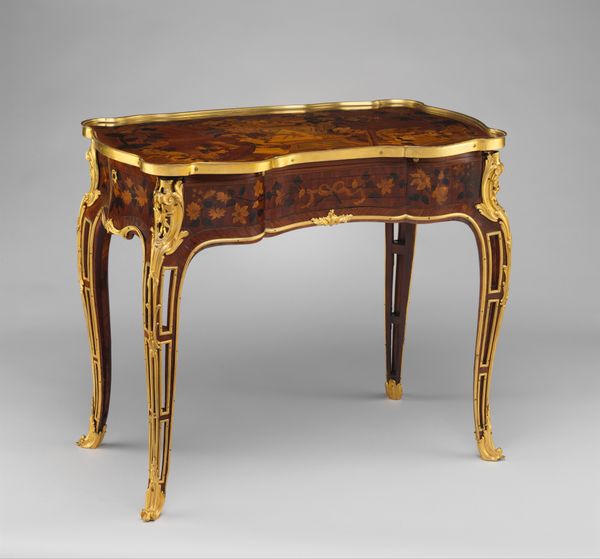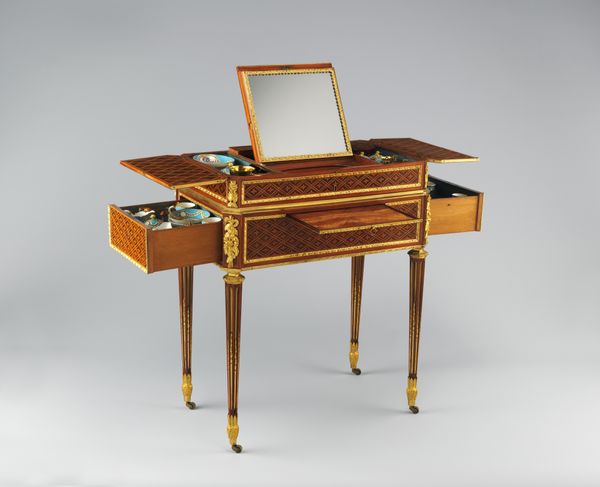
metal, sculpture, wood
#
neoclacissism
#
metal
#
sculpture
#
sculpture
#
wood
#
musical-instrument
#
decorative-art
Dimensions: Height (Total): 37 1/2 in. (95.3 cm) Width (Of case, perpendicular to keyboard): 97 1/4 in. (247 cm) Depth (Of case, parallel to keyboard): 58 7/8 in. (149.5 cm)
Copyright: Public Domain
Curator: Standing before us is a remarkable Grand Pianoforte crafted sometime between 1820 and 1860 by the renowned Érard workshop. Currently residing at the Metropolitan Museum of Art, it showcases the apex of neoclassical design applied to a musical instrument. Editor: My first thought is that it is overwhelmingly opulent. The embellishments almost overshadow its functionality as an instrument. What kind of statement was Érard trying to make? Curator: Érard certainly understood the social role instruments played. In that era, the piano was central to domestic life and female accomplishment in particular. Consider its position as a display of wealth and cultivation, inseparable from class and gender dynamics. The Neoclassical style connects the owners to an educated and refined social echelon. Editor: Precisely. The symbolic weight of this piece is monumental. Notice the repeated motifs of faces – on the legs supporting the piano. Faces can represent Muses and, with their serene expressions, appear like oracles silently imparting knowledge and beauty. Curator: Interesting point! This ornamentation could align with theories on art as an inherently patriarchal and Eurocentric system. Access to musical production, performance, and appreciation historically has been dictated by those in power. Editor: And even those cherubic figures adorning the base. Representations of innocence, love, or even divine messengers. Considering the context of a private home, where the piano would’ve been, are they moralizing? Or are they about aesthetic refinement, pure pleasure detached from moral meaning? Curator: It also prompts us to look into gender roles, placing women in the role of caregiver and mother—emphasized further in the home through artistic signifiers of children and their well-being. It subtly implies labor and expectation. Editor: I find it quite telling that such a delicate instrument should be literally supported by human figures. This emphasizes a deep interconnection, a kind of resonance where the symbolic world of humanity and the sonic world meet. Curator: Ultimately, this pianoforte embodies both high artistic accomplishment and complex social positioning. The level of refinement and the instrument’s visual encoding offer a tangible record of history and class identity. Editor: It is a marvel, sparking a contemplation about sounds, sights, symbols, and society interlinked and, also, challenging the ears, the eyes, and the mind to ask "what does beauty truly stand for, and who benefits from it?"
Comments
No comments
Be the first to comment and join the conversation on the ultimate creative platform.
